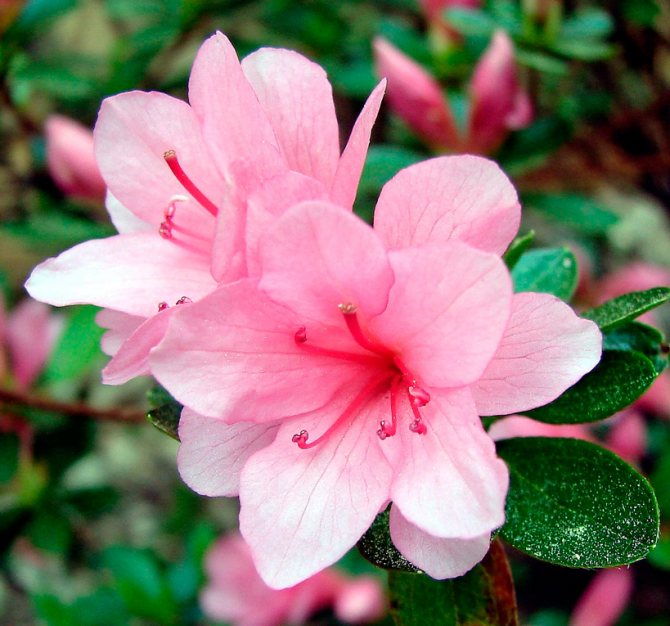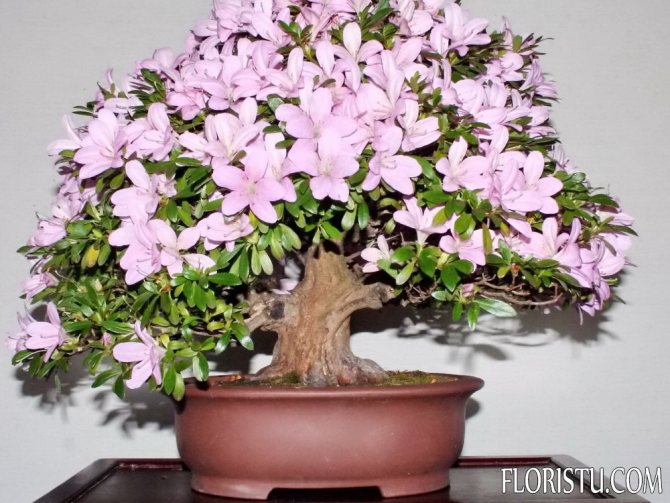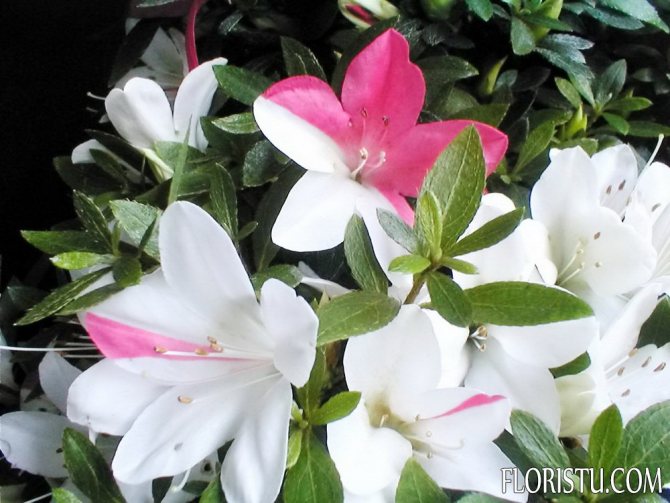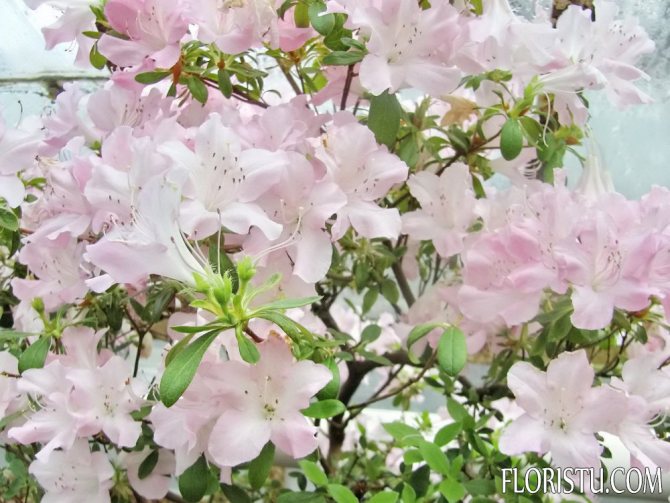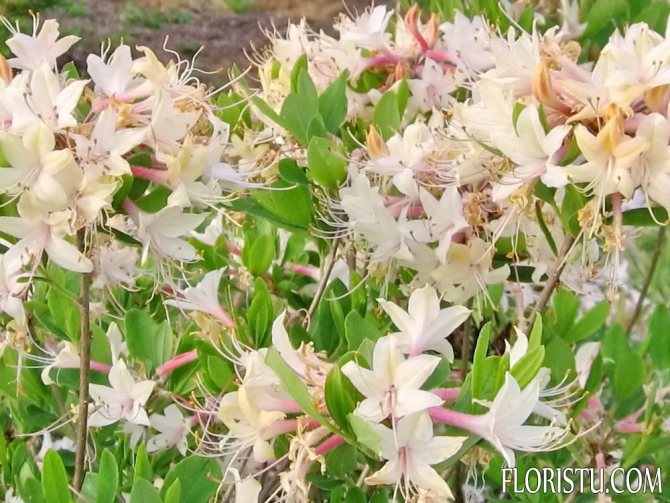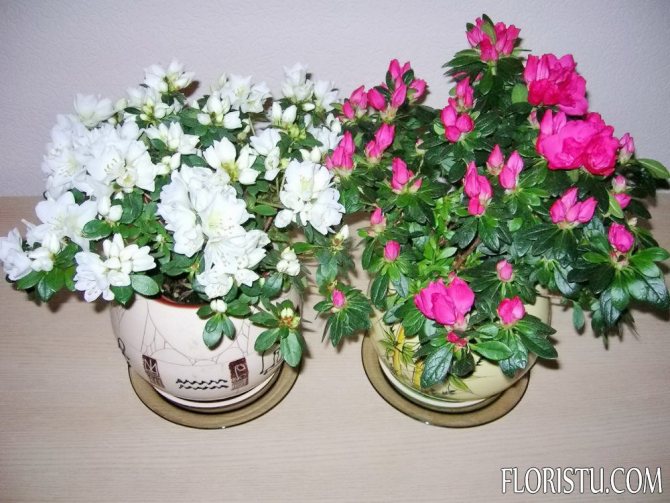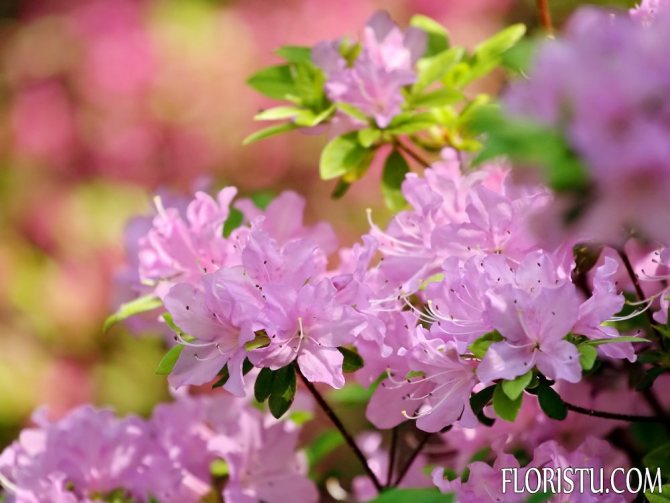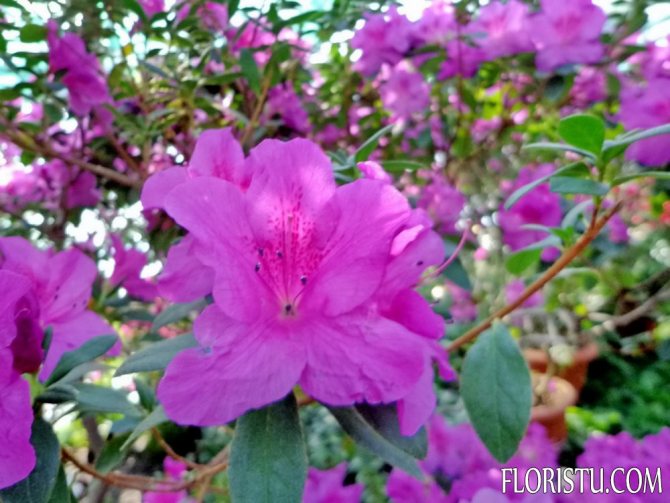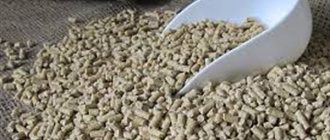When can you transplant azalea
Capricious, but so beautiful and sincerely beloved by everyone, azalea has been winning the hearts of indoor plant lovers in our country for a long time. Our climate and air humidity are not typical for her, which explains the need for special care and increased care. As a reward for this, the azalea blooms incredibly beautifully, creating a pleasant atmosphere in the room and giving it a festive and elegant look. There are many tips for caring for it and it is difficult to collect them into one complete material, so it is advisable to dwell on each issue separately and analyze them separately. In this article, we'll summarize key tips on how to properly transplant an azalea.
A young plant, which has not yet turned three years old, is transplanted no more than once a year. Violation of this regime and reduction of the interval is possible only if the root system has grown too much, or if the soil or roots begin to rot. For the older plant, more frequent transfers are already allowed, twice a year, but, again, only when necessary.
The best period for transplanting an azalea is spring, it is then that pruning of the bush is carried out, and these two procedures are combined. Later, a period of active growth begins and at this time it is not recommended to disturb the plant, unless there is a desire to lose it.
Where to buy soil for azaleas
Manufacturers of related products of the florist got their bearings in a timely manner and realized that preparing a substrate for a rosewood is a responsible and time-consuming process that not everyone can master. They began to produce and produce special soil, which can be purchased by both beginners and experienced flower growers. Each flower shop has such substrates in its assortment.
Ready-to-use potting mixes for sale fully meet the requirements of the capricious beauty. The finished substrate contains a complex of trace elements and mineral components, which makes it possible not to use additional dressings for the first three months after planting the bush. Also, when acquiring a substrate, it must be remembered that one composition favorably affects the growth and development of the bush, and the other is intended for reproduction of the bush and sowing seeds.
Azalea transplant after purchase
Most of the plants are recommended to be immediately planted in new soil after purchase, because enterprises do not use for transportation and sale of those substrates in which plants grow well for a long time. However, transplanting azaleas at home after purchase is carried out only after it has been adapted to the new environment. It is difficult to say exactly how long it will take for this, it is worth focusing on the state of the plant. You can often notice that a beautiful and lush plant that stood in the store, after being placed in the apartment, slightly lowers the leaves, discards the color. These are not alarming signals, this is her reaction to the move, stress. After a while, her condition will return to normal. It is worth worrying if time passes, but this does not happen, perhaps the conditions do not suit her or she suffers from an illness.
When the beauty is already accustomed to the new home and feels good, you can make a decision on the selection of a new pot and transshipment.The land is strongly recommended to buy ready-made, azalea is demanding on the soil, and even the slightest violation of the proportions when it is prepared on its own can have dire consequences for it.

Azalea home description, photo
Azalea is a dwarf plant called the "rose tree". A feature of the culture is lush flowering in the winter. In the Alps, these wonderful flowers are called "roses", because in its appearance the bud strongly resembles a true rose. This variety belongs to the extensive and popular genus - Rhododendron. A native indoor flower from Japan and China. However, in the wild, bushes can be found in southern Europe and North America. Translated from Greek "rhodon" means "rose", and "dendron" - "tree". That is why the name "rosewood" is quite reasonable.
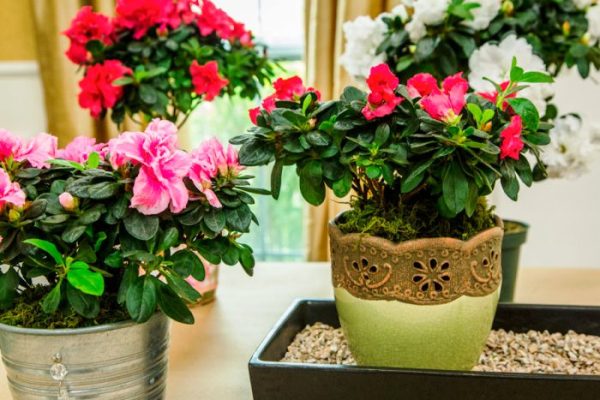

After the discovery of a wild species in the mountains, scientists began to work on the selection and breeding of various varietal species. The result of many years of work has become more than 10 thousand varieties and types. Many cultures have a special place for azaleas. In Europe, for example, a flower is the main decoration of the Christmas table and is a symbol of family happiness and well-being. Depending on the varietal species, the height of the bush can reach 1.5 m.The indoor flower usually does not exceed a height of 60 cm.
The stems can partially grow stiff, the lateral shoots branch beautifully on both sides. The foliage is deep green in color and has a semi-oval shape. The buds are considered the main value of the plant. They gather in a complex inflorescence and form far away in the leaf axils. The shade of the inflorescence can be varied. The most common are scarlet, snow-white and cream buds. A home bush, after purchase or transplantation, can continue to bloom throughout the season.
On the territory of Russia, the rose tree appeared at the beginning of the twentieth century, and was grown exclusively in botanical gardens. In nature, there are about 350 varieties of flowers. In home cultivation, Indian and Japanese azalea are popular. These varieties are evergreen shrubs, not exceeding 50 cm in height. Japanese azalea can be grown in the backyard.
Azalea transplant after flowering
Azalea is often bought with flowers, or rather, thanks to these flowers, it is bought, and many of its owners are wondering whether it is possible to transplant a blooming azalea. We do not recommend doing this for two reasons. Firstly, for transplanting, all the flowers must be cut and then the owner independently deprives himself of the main decoration of the flowerpots. Secondly, if the flowers are not cut off and simply transplanted the blooming plant into a new soil and pot, it will begin to plant seeds, which will dramatically deplete the azalea and only name will remain of its beauty.
It is best to wait until the plant has bloomed, cut off all dry buds and start the procedure, or rather, to prepare the procedure. Preparation includes pruning and soil preparation. Although we do not recommend doing this, we will tell you how to prepare the soil for transplanting an azalea with your own hands. For this, sour and loose heather soil or a mixture of pine needles and peat is used, to which trichodermin is attached, designed to protect the plant from fungi and rot. It is often difficult to find clean soil that will suit azaleas, so when choosing a future room pet in the store, you should also ask for a package of special soil mixture "For Azaleas". Prepared soils are not expensive and greatly simplify the entire procedure.
The pots for the plant are chosen wide, plastic or clay and slightly larger than the previous ones, the root system of the azalea grows well. Drainage must be poured at the bottom of the tank to avoid stagnant water and root decay, and its layer must be thick enough, and a layer of pine bark is laid on it, which can increase the acidity of the soil.
A pruned and devoid of inflorescences plant is extremely carefully removed from the pot, trying to minimize the involvement of the roots. The earthy ball will be tightly braided by them and it will resemble a sponge, but the root must be carefully examined. Root particles may be dead and must be carefully trimmed, after which it is soaked in zircon and growth stimulant. Competent cutting of the root system has a very good effect on the further state of the plant, activates its growth.
The processed and moisture-saturated bush is placed in a pot and covered with loose earth, after which it is placed in a well-lit place, but protected from direct sunlight. It is important to protect it from drafts and heating devices that dry and overheat the air.
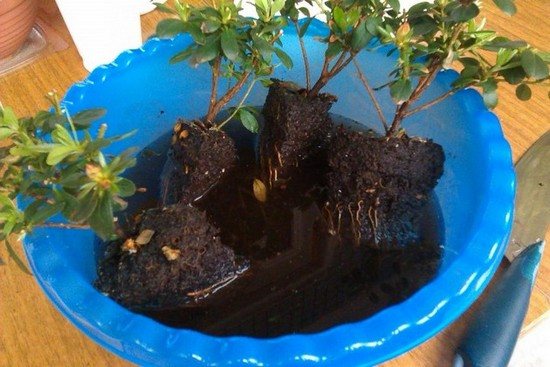

How to properly transplant azalea indoors
Before planting the azalea, preparatory work is carried out. For this you will need:
- Sharp knife or secateurs.
- Alcohol for tool processing.
- Purchased or self-prepared soil.
- Planting capacity.
Selection and preparation of soil
How to transplant a cactus: options at home
If for some reason it is not possible to purchase a special substrate for azaleas, prepare it yourself. To do this, mix:
- finely chopped pine bark;
- pre-well dried sphagnum;
- perlite or vermiculite;
- sifted river sand;
- coal;
- nutritious soil.
All components are thoroughly mixed. Before planting, the resulting substrate is treated with a disinfectant.
On a note! One of the drugs is added to the final mixture: root or trichodermin.
Pot selection
A wide container is suitable for planting. The size of the new pot is adjusted according to the size of the root system. A planter is ideal for azaleas.
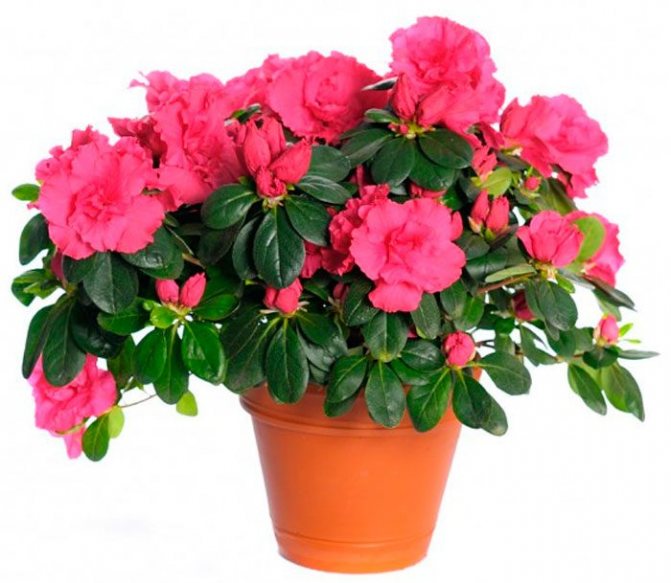

Transplant capacity
Renewal root pruning
Sanitary root pruning has a beneficial effect on the plant. The flower, along with an earthen lump, is taken out of the pot. Initially, external damage is inspected and dead parts are removed. It is not recommended to separate the dense earthen lump with your hands, this can lead to damage to the weak roots. Before pruning, soak it in a mixture of warm water and Zircon. After this, they begin to update pruning. The roots are cut on each side by 1-1.5 cm.
Splitting an azalea
The division of the bush is carried out not only for reproduction of the species you like, but also due to the large size of the plant. To do this, carefully take the flower out of the pot, examine the root system and, as necessary, cut off diseased or dried parts. The earthen ball is cut into several pieces with a knife.
Important! At least one shoot remains on each section. Each new plant needs its own individual pot.
Planting in another pot
The landing procedure consists of a number of step-by-step activities:
- The bottom of the container is covered with drainage by 3 cm.
- The next layer is chips or crushed moss.
- To prevent decay, sprinkle with any antifungal agent.
- The soil composition is covered with very little, only to carefully distribute the root system over the planting container.
- The roots of the presoaked azalea are lightly squeezed out.
- The flower is placed exactly in the center of the pot and carefully covered with soil.
- It is not recommended to deepen the root collar of the plant, this can damage it and will not allow it to develop normally.
- The substrate is lightly tamped.
- Watering after planting is carried out with the same composition in which the soaking was carried out.


Overgrown root system
Note! Azalea should not be watered abundantly after planting. This can lead to rotting of the roots first, and then the whole flower.
Azalea care after transplant
Watering azaleas after transplanting is carried out on the fifth or sixth day and for this, warm filtered or, at least, settled water is used. Watering should be gentle and moderate. In the first month and a half, the azalea will not show signs of active growth and may not look too "happy", which is explained by its acclimatization, adaptation and restoration of the trimmed root system. However, if watering, air temperature and humidity are maintained at the required rates, the grateful plant will quickly recover and begin to grow.
If this does not happen, it is worth revising the conditions of detention, especially watering, making sure that water does not accumulate in the pan, and the humidity of the air is not too low. The soil is checked, it is loose enough to soak water and let air through to the roots. Too long recovery can signal root decay.
Possible errors and their correction
Common mistakes:
- The ground is too hard... If you plant an azalea in what kind of soil, then most likely the plants will not survive. Since the food will be difficult. The solution is to transplant or transship the azalea into more suitable soil.
- The earth is not acidic enough. In this case, symbiont fungi will die, which means that the plants will not receive the necessary amount of nutrients. The solution is to acidify the soil with special additives or transplant the plant.
- Excessive peat content... This is especially true of low-lying peat, which is heavy and moisture-consuming in structure. If there is too much of such peat, then moisture will stagnate in the soil, which can lead to root rot. This problem can also be solved by transplanting the plant into a more suitable soil.
One of the basic conditions for Azalea's wellness is soil. Suitable soil is nutrition, moisture, normal metabolic processes in the plant's body. If the soil is not suitable, the plant will not lead, and it is unlikely to survive.
If you find an error, please select a piece of text and press Ctrl + Enter.
Is it possible to transplant young and adult plants in the autumn?
Transplanting to another place is allowed to be carried out only after the azalea has faded. During the dormant period, the plant should also not be touched, as buds are laid and formed. Transplanting is allowed only during the growing season, 2 weeks after the rhododendron has faded. Young bushes are transplanted annually, old ones - once every 2-3 years.
Learn all the nuances of transplanting home azaleas and garden culture.
How to prepare the mixture yourself?
Let's find out which soil for rhododendron can be made by yourself, whether peat is needed in its composition. Do-it-yourself soil preparation requires absolute compliance with all proportions of substances, which are indicated below:
- Coniferous land - 2 parts.
- Leafy ground - 2 tsp
- Peat - 1 tsp
- Heather land - 1 tsp
- River sand - 1 tsp
Important! It should be noted that peat and coniferous soil are mandatory components.
To disinfect the soil, sphagnum moss or charcoal is added. Before adding moss, rinse well, dry and grind.


Perlite and river sand are loosening agents. The looseness of the earth contributes to good air and water permeability. With its lack, moisture stagnation occurs, which contributes to the development of diseases.
Expanded clay can be used as drainage. It is poured separately on the bottom of the pot with a layer of about 3-4 cm, without mixing with the soil. This avoids the formation of mold on the topsoil.
Which land does the flower love and which one does not?
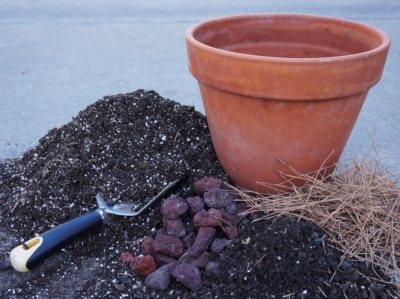

In order for the azalea to feel comfortable, the soil must have moisture and water permeability, be light and rather loose, containing the necessary acidity, a large amount of humus and nutrients, and retain moisture well.
Neutral soil is categorically not suitable for planting, this is justified by the fact that the acids and alkalis contained in it are completely balanced and lead to neutralization of each other. It is highly not recommended to use crushed limestone as drainage, as it alkalizes the soil, making it less acidic.
Reference. Do not add ash to the soil and use fertilizers containing chlorine and lime.



